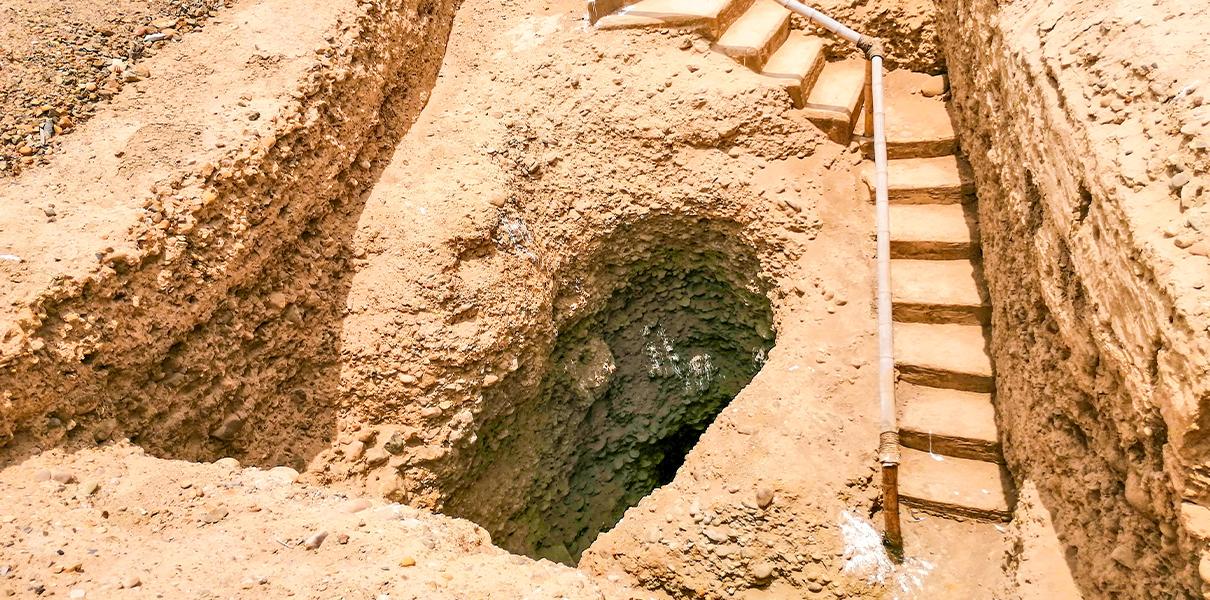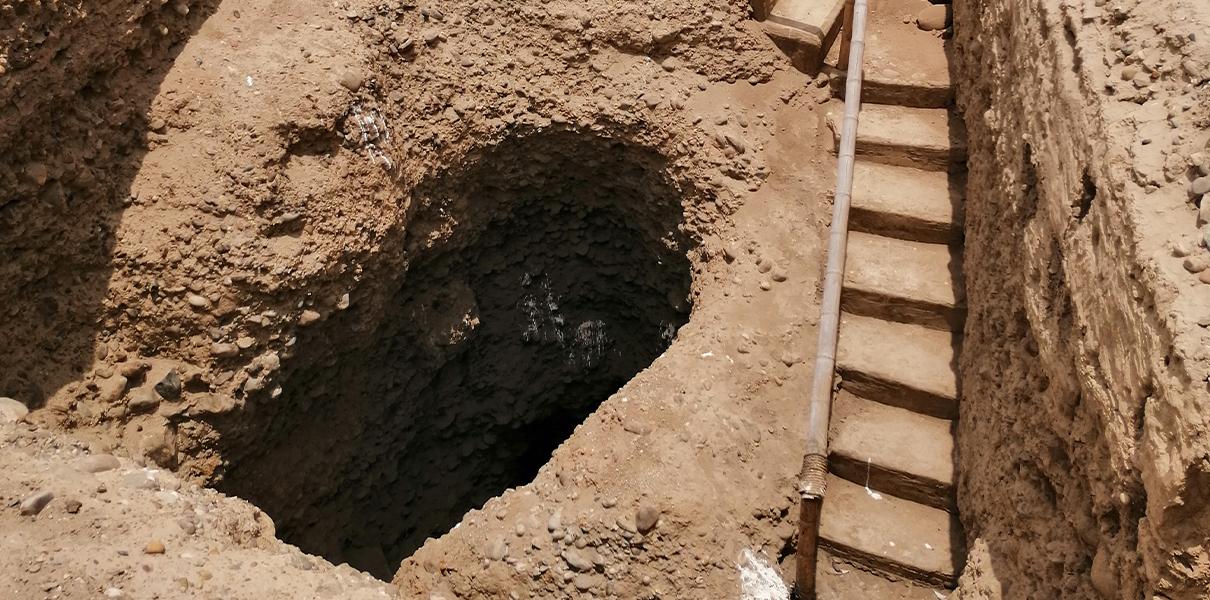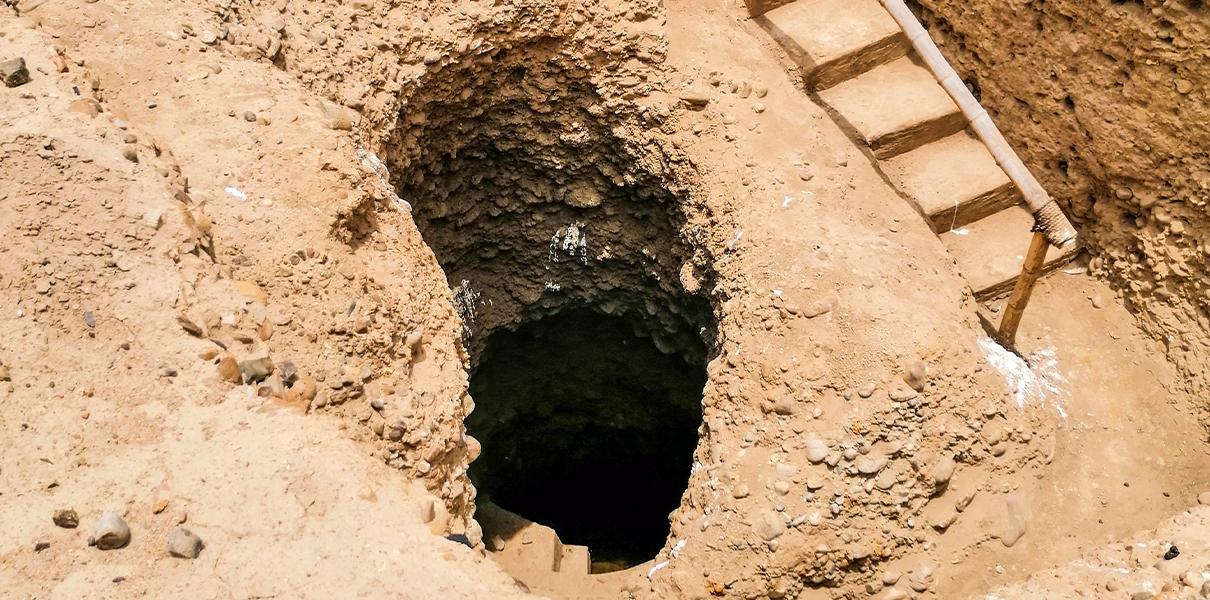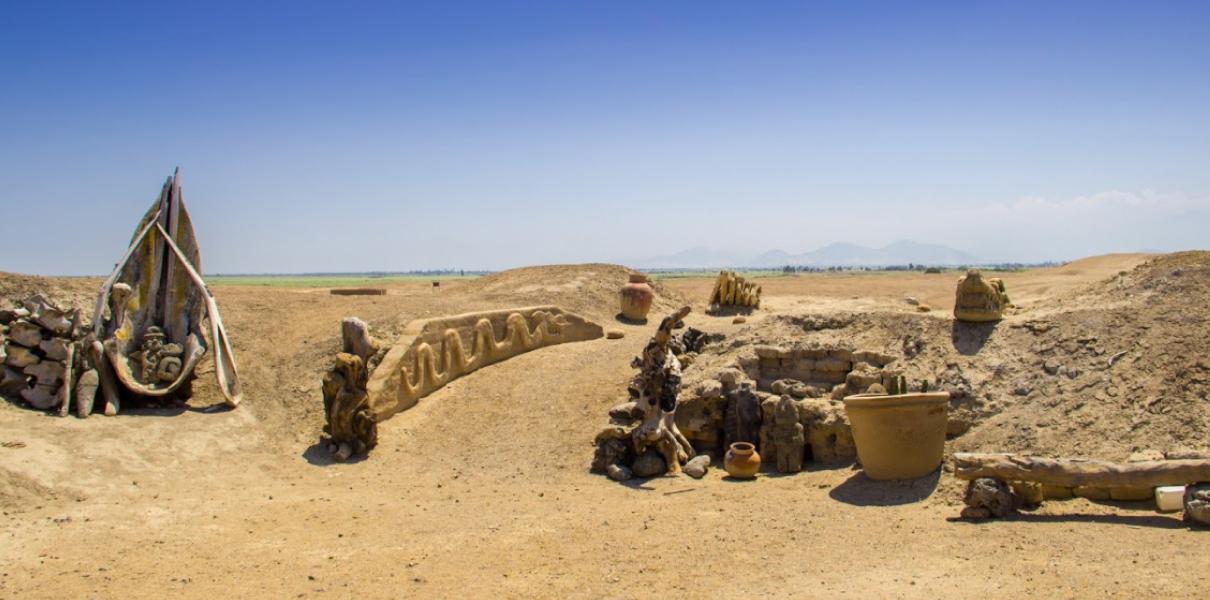- Visitors
- Researchers
- Students
- Community
- Information for the tourist
- Hours and fees
- How to get?
- Visitor Regulations
- Virtual tours
- Classic route
- Mystical route
- Specialized route
- Site museum
- Know the town
- Cultural Spaces
- Cao Museum
- Huaca Cao Viejo
- Huaca Prieta
- Huaca Cortada
- Ceremonial Well
- Walls
- Play at home
- Puzzle
- Trivia
- Memorize
- Crosswords
- Alphabet soup
- Crafts
- Pac-Man Moche
- Workshops and Inventory
- Micro-workshops
- Collections inventory
Students
Students
Ceremonial Well
A Moche temple in the El Brujo archaeological complex
Por Jose Alva y Augusto Bazán

The archaeological surveys of September 1994 located a ceremonial well from a hole made by a tomb robber in the vicinity of the Huaca Cao Viejo. The depth of the desecration was suspect; it was 4 meters deep. For this reason, it was decided to intervene in that place and thus understand what evidence the looters were pursuing. The interventions determined that that great depression responded to a large underground structure, in whose depths water flowed. This is how the ceremonial well of the El Brujo Archaeological Complex was discovered.
What is the Ceremonial Well like?

The structure was worked on in the natural soil of the archaeological complex. The ancient Mochica excavated those hard sediments filled with stone and gravel, simulating the shape of a spiral or snail. By means of stairs carved in said sediments, one descended to a small pool where even today there is a water hole. The walls of the great shaft were not finished, so their profiles still show the natural stones of the geological formation. The well is 12.47 m deep and its mouth is circular in shape, with an approximate diameter of 3.40 m.
What did the archaeologists find?

The archaeological interventions removed approximately one ton of earth that filled the well. Inside this landfill, materials from previous cultures were found. For this reason, it is assumed that the ancient Moche used land in the vicinity to close the structure.
Understanding that the fill had the same depth as the well (12 m), it had to be deposited at different levels, made up of soil, ceramic fragments and skeletal remains of humans and animals. From the fourth level, the humidity was more noticeable. Surprisingly, it was there that a bed of stones was found covering a male individual of approximately 30-40 years of age. Below it, the water was stored, in a cavity 2.5 m in diameter, which was fed through three conduits duly identified by the excavations.
What was the well for and why was it abandoned?

Samples of the water were sent to the laboratory in order to determine its quality. The results determined that the water is not suitable for agricultural work, much less for human consumption. That is why archaeologists suggest that the existence of the structure responds to eminently ceremonial criteria, associated with the Moche cult of water.
Spiral shapes appear recurrently in the Moche iconographic repertoire. For example, there are representations of underground structures associated with skeletons that descend towards them. In addition, the spiral is reflected in a recurring manner in the architectural decoration of the main sacred spaces of the Moche temples.
Finally, the burial of a male individual is interpreted as the first activity within the event of abandonment and closure of the well. When the ancient Moche decided not to use it anymore, they deposited this personage and buried the structure as if he were an important person, with feasts and offerings.
Everything in these accounts provides an idea of the ritual relevance of said underground structure in the ceremonial activities of the Mochica who inhabited the El Brujo Archaeological Complex.
Bibliography
• Franco, R., Gálvez, C .; Vasquez, S. (1998). "A Moche ceremonial well in the ‘El Brujo’ Archaeological Complex”. Journal of the Faculty of Social Sciences 5: 307-328.
• Franco, R., Gálvez, C. (2003). “A Moche ceremonial well in the ‘El Brujo’ Archaeological Complex”. A case of underground Mochica architecture”. Arkinka 97: 88-95.
• Mujica, E. (Ed.) (2007). El Brujo. Huaca Cao, Moche Ceremonial Center in the Chicama Valley. Lima: Wiese Foundation.